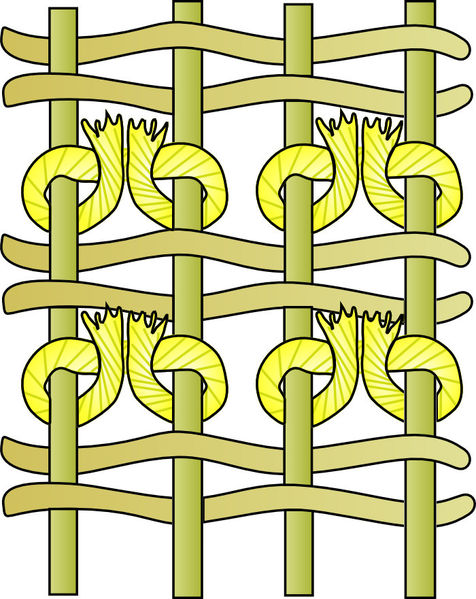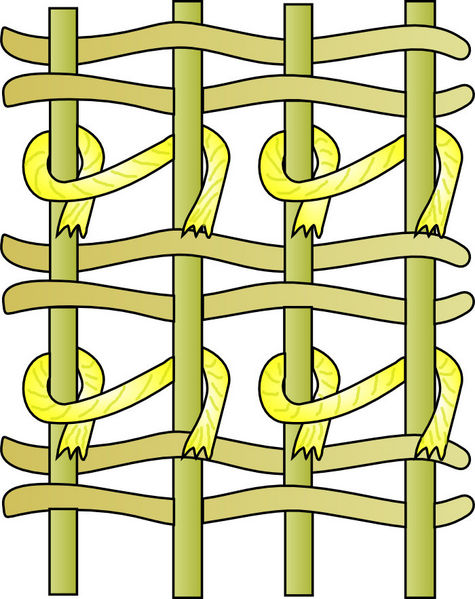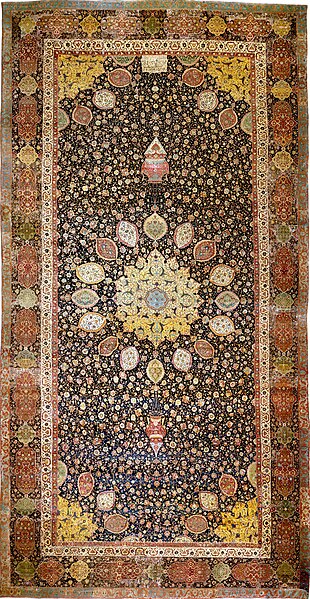A knotted-pile carpet is a carpet containing raised surfaces, or piles, from the cut off ends of knots woven between the warp and weft. The Ghiordes/Turkish knot and the Senneh/Persian knot, typical of Anatolian carpets and Persian carpets, are the two primary knots. A flat or tapestry woven carpet, without pile, is a kilim. A pile carpet is influenced by width and number of warp and weft, pile height, knots used, and knot density.
Ghiordes knot
Senneh knot
Knotted carpet with colorful wave-like motifs from Yanghai (Subeshi culture) were dated to 700 BCE, and are now the oldest known knotted carpet in the world, before the 4th century BCE Pazyryk carpets. Turpan Museum.
Decorated knotted-pile carpet from Pazyryk-5. 4th century BCE.
A carpet is a textile floor covering typically consisting of an upper layer of pile attached to a backing. The pile was traditionally made from wool, but since the 20th century synthetic fibers such as polypropylene, nylon, or polyester have often been used, as these fibers are less expensive than wool. The pile usually consists of twisted tufts that are typically heat-treated to maintain their structure. The term carpet is often used in a similar context to the term rug, but rugs are typically considered to be smaller than a room and not attached to the floor.
One of the Ardabil Carpets
A small rug
Turkish woolen carpet
A carpet seller in Jaipur, India








